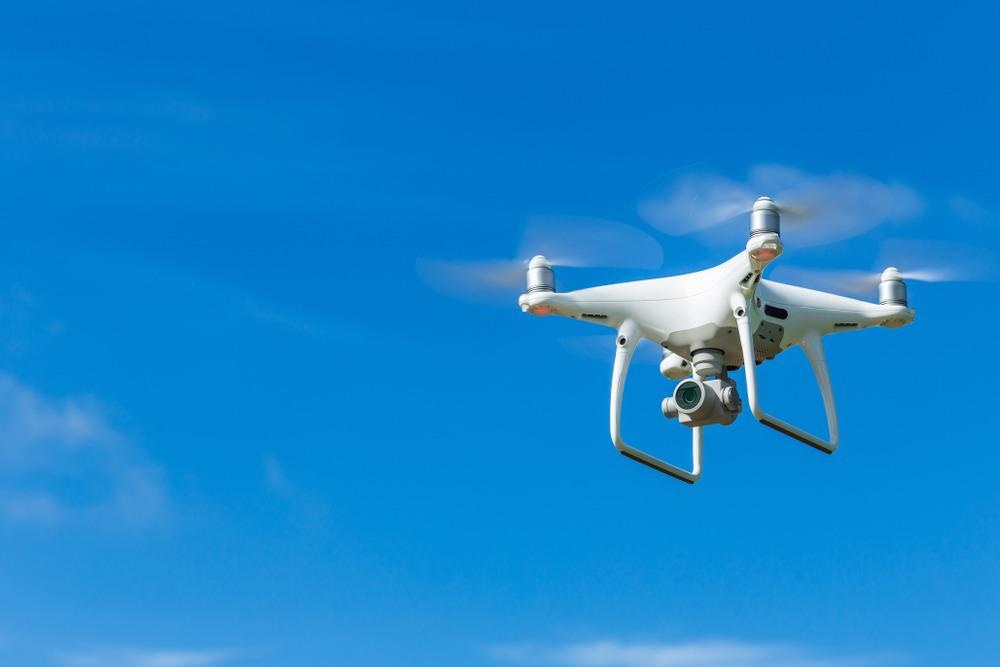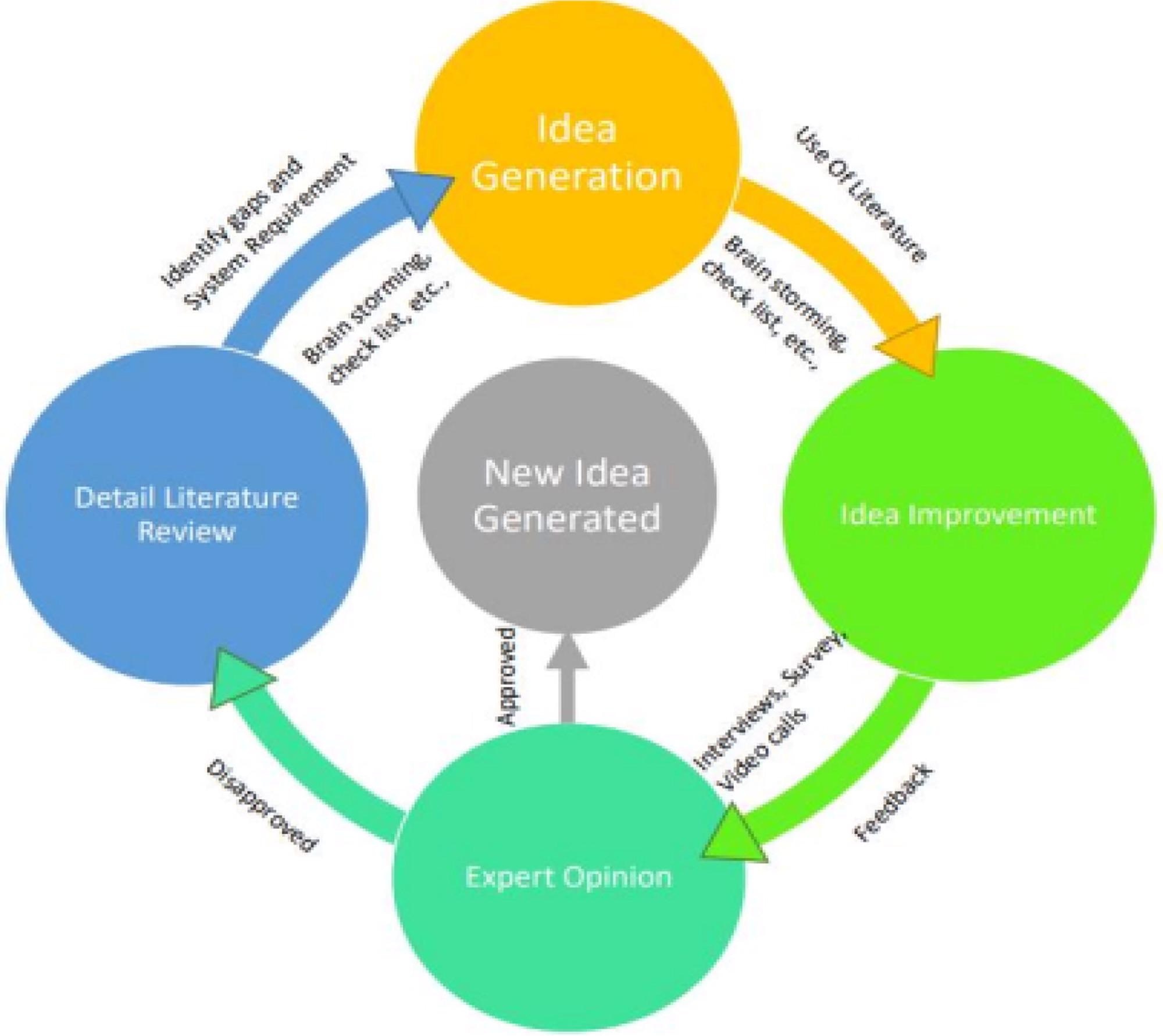MRO (maintenance, repair, and overhaul) are critical tasks that affect a system’s price and dependability, but many maintenance tasks are still carried out by humans.

Image Credit: Piyawat Nandeenopparit/Shutterstock.com
A self-engineering (SE) system is stated to have four key characteristics:
1) It must reestablish or partially replace lost feature or capacity, (2) it must be constructed into the system, (3) it must seek to avoid service, enhance the quality of life, and/or enhance system strength, and (4) it must have no human/user intervention, with all processes, responses, and behaviors being automated.
Self-healing composite materials, self-repairing RAMs for computers, and self-adapting robotics are all examples of SE systems.
Unmanned aerial vehicles (UAVs), commonly known as drones, have grown in popularity as the technology has become more commercially available. Imperial College London developed a prototype drone system to locate and fix leaking pipes containing oil, gas, and dangerous chemicals. The Mine Kafon Drone (MKD) is a landmine detection, mapping, and detonation drone with a variety of modular accessories. The first attachment is a mapper, the second is a metal detector, and the third is a robotic arm that detonates the mines.
In an article submitted to Materials Today: Proceedings, researchers look into novel ways that drones could be used in SE systems.
Methodology
The development of new ideas followed a cyclic pattern, as shown in Figure 1. The initial step was to look over new educational research and industry studies on drone capabilities and maintenance requirements to uncover untapped possibilities.

Figure 1. Initial method used to identify new SE system using drones. The process was repeated in a cycle until five new ideas were created for use in the study. Image Credit: Naz, et al., 2022
Ships feature a complicated interior construction that includes enclosed compartments, which are small and confined places. These enclosed facilities are not meant for prolonged worker occupancy and have limited apertures and poor air circulation. It is hazardous for employees due to toxic air gases, a lack of oxygen, the possibility of falling or slipping, and combustible gases.
Sadly, there have been several injuries and deaths in restricted settings. It is indeed challenging to remove all of the dangers of enclosed areas while keeping human exposure to a minimum. The use of a drone-based SE system to undertake automatic repair and maintenance of enclosed spaces is presented.
Figure 2a depicts the system in its most basic form.

Figure 2. Diagram of three of the proposed ideas, (a) self-repair of enclosed space, (b) self-cleaning road with drones and (c) self-repairing air conditioning. Image Credit: Naz, et al., 2022
A more intelligent technology solution could be deployed, particularly for high-speed or hazardous roadways that workers are unable to access safely. Figure 2b depicts a simple schematic of a self-cleaning road system that uses drones to clear trash or debris.
Due to the ridiculous changing climate, additional 10.9 billion air conditioning (AC) units are expected to be operational by the year 2050. Outside condenser coils that are dirty or broken are regular AC repair issues.
Difficulties in obtaining the condenser unit for repair on tall structures mean that procedures can be costly. A drone could be used to examine the condition of external air conditioning condenser units and make automatic repairs.
Figure 2c depicts the mechanism in its most basic form.
The study’s next step was to test the ideas with industry professionals. On LinkedIn, workers in each of the five ideas’ sectors were discovered and a survey was issued to them. The poll was only distributed to professionals with at least five years of experience in a comparable sector, so responses were kept confidential. Table 1 shows the total number of responses.
For each question, three options were offered and the results are shown in Figure 3.
Table 1. List of industry participants in each sector who responded to the survey and the idea number they were presented with. Source: Naz, et al., 2022
| Industry of participant |
Idea number |
Idea presented |
Number of responses |
| Shipping industry |
1 |
Self-repair in enclosed spaces |
5 |
| Council waste management |
2 |
Self-cleaning roads |
3 |
| HVAC |
3 |
Self-repair air conditioning |
4 |
| Underwater ROV inspection |
4 |
Autonomous pipe repair |
4 |
| Construction Industry |
5 |
Self-repair building cladding |
3 |

Figure 3. Results from an initial survey with the industry of the five ideas created. Graph (a) indicates the view of experts on the impact of the new proposed idea on overall process cost, (b) shows the views of impact on safety, and (c) shows the views on the impact on the quality of data collected about the processes. Image Credit: Naz, et al., 2022
Table 2 lists the qualifications of each specialist. Before the interview, participants were emailed a description of the system proposal. Actual industrial practices, current usage of drones, appropriateness of the design, and any potential difficulties with the notion were all discussed.
Table 2. Experience and role of the three experts interviewed further about Ideas 1, 2, and 3. Source: Naz, et al., 2022
| Industry |
Interviewed on |
Profession/Rank |
Experience |
| Marine shipping |
Idea 1 |
2nd Engineer |
6 Years |
| Council waste disposal |
Idea 2 |
Waste Management |
11.5 years |
| HVAC Research |
Idea 3 |
Research in Refrigeration systems |
5 Years |
Results and Discussion
The most promising approach was the self-repair of the enclosed areas system, based on additional consultation with drone specialists employed at the outset of the project and response from the interviews done (idea 1). Drones in enclosed places, on the other hand, do not have to consider intricate interactions with humans or animals.
For each part on the final list, a maximum, minimum, and most likely cost was determined. The maximum cost was determined by the highest cost of compatible parts discovered, while the minimum cost was determined by the lowest cost of suitable parts discovered. A price typical of the most frequent price for the component was chosen for the most likely cost. Table 3 summarizes the ultimate costs.
Table 3. Maximum, minimum and most likely build cost for Self-repair drone system. Source: Naz, et al., 2022
| |
Minimum |
Most Likely |
Maximum |
| Total cost (£) |
2909 |
4,555 |
7,512 |
The evolution of the systems’ autonomous capabilities will necessitate a far higher investment. The expenses of developing autonomous capacities for the projected self-repair of enclosed spaces system are anticipated to be similar, while prices could be reduced with additional drone research, innovation, and regulatory changes.
Conclusion
This study suggests five novel SE systems that might be implemented utilizing drones. Surveys and conversations with specialists in each area were used to assess the proposals. SE systems could use drones to fix wind turbines and roads, but there are still a lot of other possibilities.
Future research should concentrate on drone system automation, as many existing programs are still structured to be overseen or directed by humans. Research might also focus on automating repair responses, such as developing a drone actuator and controllers to spray an even coat of paint on a flat surface.
Journal Reference:
Naz, A. T., Brooks, S., Roy, R. (2022) Investigation of future applications of self-engineering using drones. Materials Today: Proceedings. Available Online: https://www.sciencedirect.com/science/article/pii/S2214785322021162#section-cited-by.
References and Further Reading
- Brooks S & Roy R (2021) An overview of self-engineering systems. Journal of Engineering, Design and Technology, pp. 1-51. doi.org/10.1080/09544828.2021.1914323.
- Roy R & Brooks S (2020) Self-Engineering – Technological Challenges, in: Karabegović I. New Technologies, Development and Application III. NT 2020. Lecture Notes in Networks and Systems, Springer, pp. 16–30. https://doi.org/10.1007/978-3-030-46817-0_2.
- Denhof, D., et al. (2019) Automatic optical surface inspection of wind turbine rotor blades using convolutional neural networks Procedia CIRP. 81, pp. 1166-1170. doi.org/10.1016/j.procir.2019.03.286.
- Bonnin F & Pascual A (2019) Ortiz On the use of robots and vision technologies for the inspection of vessels: A survey on recent advances. Ocean Engineering,190, p.106420, doi.org/10.1016/j.oceaneng.2019.106420.
- Pagnano, A., et al. (2013) A roadmap for automated power line inspection. Maintenance and repair Procedia CIRP, 12, pp. 234-239, doi.org/10.1016/j.procir.2013.09.041.
- Smith, C (2016) Drones that fix pipeline leaks win international acclaim. Available at: https://www.imperial.ac.uk/news/170806/drones-that-pipeline-leaks-international-acclaim/ (accessed June 30, 2021).
- Hassani, M. (2016) Mine Kafon Drone. Available at: https://minekafon.org/ (accessed November 15, 2021).
- Bernardini, S., et al. (2020) Sareh A Multi-Robot Platform for the Autonomous Operation and Maintenance of Offshore Wind Farms Aamas. pp. 1696-1700
- Torbaghan, M. E., et al. (2019) Purnell Robotic and autonomous systems for road asset management : a position paper. Smart Infrastructure and Construction, 172, pp. 83-93. doi.org/10.1680/jsmic.19.00008.
- Çakir, E (2019) Fatal and serious injuries on board merchant cargo ships. International Maritime Health, 70, pp. 113-118. doi.org/10.5603/IMH.2019.0018.
- (ITF) International Transport Workers Federation, International Transport Workers Federation stresses shocking spike in confined space fatalities, (2019). Available at: https://www.iims.org.uk/international-transport-workers-federation-stresses-shocking-spike-in-confined-space-fatalities/ (accessed August 7, 2021).
- Gouk, A (2020) The true cost of litter and fly tipping in England. Available at: https://www.inyourarea.co.uk/news/ (accessed August 6, 2021).
- International Energy Agency (IEA) (2018) The Future of Cooling Opportunities for energy- efficient air conditioning. Available at: www.iea.org.
- Breuker, M & Braun, J (1998) Common faults and their impacts for rooftop air conditioners. HVAC&R Research, 4(3), pp. 303-318, doi.org/10.1080/10789669.1998.10391406.
- Woodward, A (2021) 'Ocean on fire’: Flames erupt in Gulf of Mexico after gas pipeline ruptures, Independent. Available at: https://www.independent.co.uk/climate-change/news/gulf-mexico-fire-gas-pipeline-leak-b1877456.html.
- Keim, B (2011) June 3, 1979: The First Great Gulf Oil Disaster, Wired. Available at: https://www.wired.com/2011/06/0603itxtoc-oil-blowout-gulf-of-mexico/.
- Unkown, Three hurt in Russia oil pipeline blast, BBC News. (2015) Available at: https://www.bbc.co.uk/news/av/world-europe-33938412.
- Mathiesen, K. (2015) Gulf of Mexico oil rig explosion leaves four workers dead Guard.
- Madigan, E (2019) MIMRee explores future of offshore wind O&M Press Release, ORE Catapult. Available at: https://ore.catapult.org.uk/press-releases/mimree-inspection-repair-solution/ (accessed November 15, 2019).
- de Brito, J., et al, (2020) Expert Knowledge-based Inspection Systems (Chapter 5). doi.org/10.1007/978-3-030-42446-6.
- Sah, B., et al. (2021) Analysis of barriers to implement drone logistics. International Journal of Logistics Research and Applications, 24(6), pp. 531-550. doi.org/10.1080/13675567.2020.1782862.